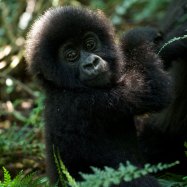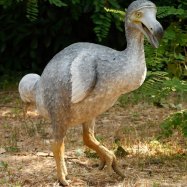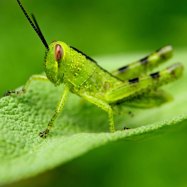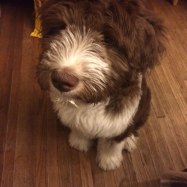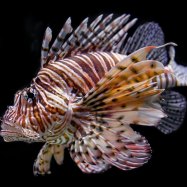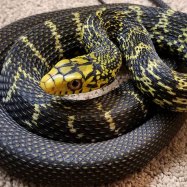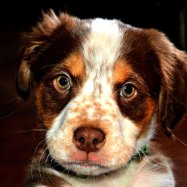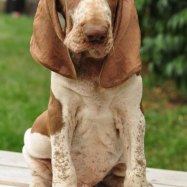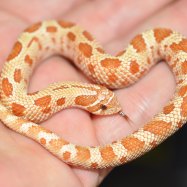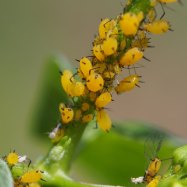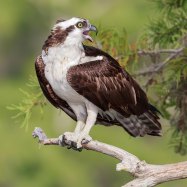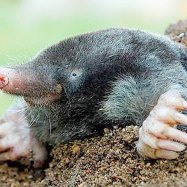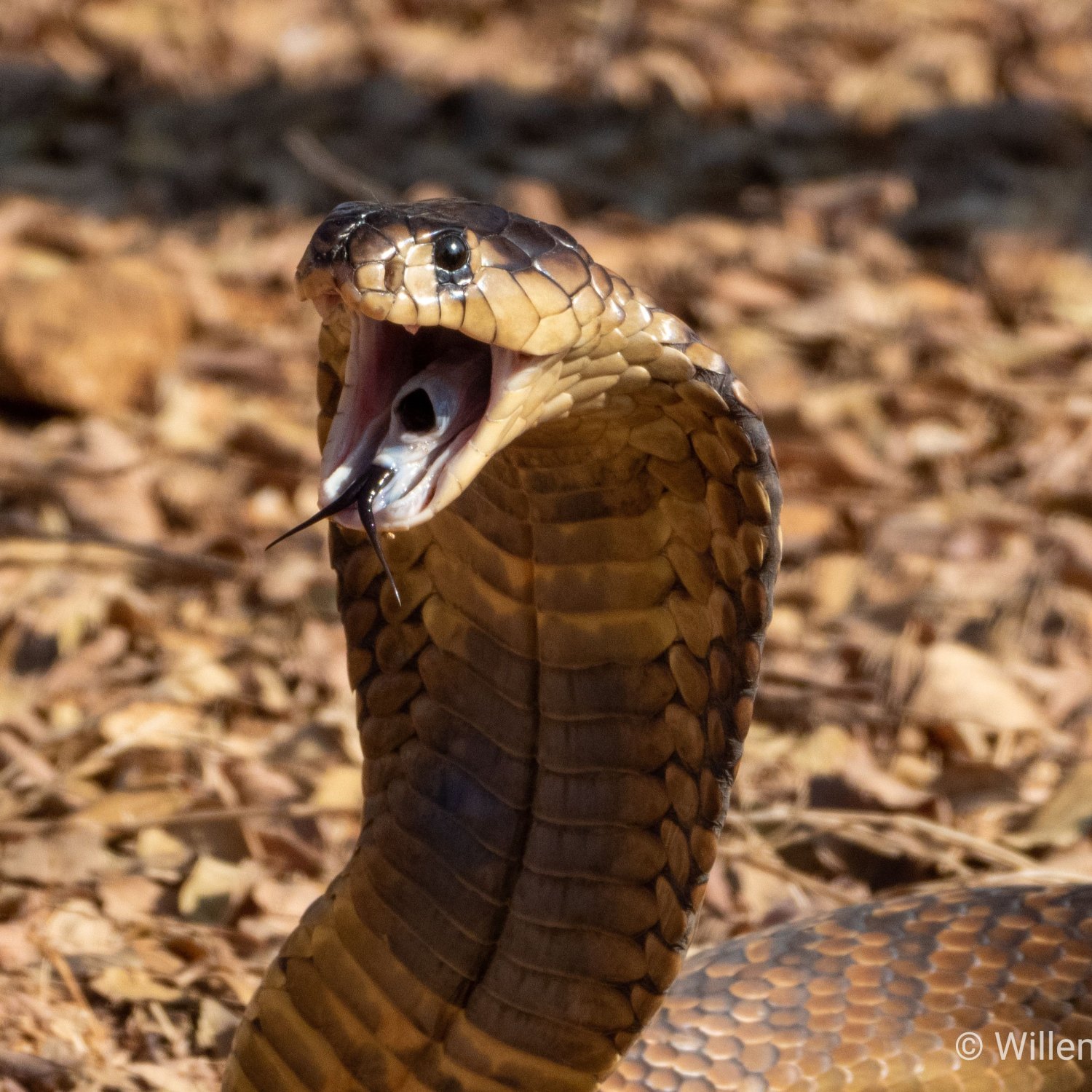
Snouted Cobra
Up to 1.5 meters (4.9 feet)
The snouted cobra is a venomous snake found throughout southern Africa. With its slender and elongated body shape, it can reach up to 1.5 meters in length. It is part of the Elapidae family, known for its potent neurotoxic venom. Stay alert when encountering this beautiful yet dangerous animal. #SnoutedCobra #SouthernAfrica #VenomousSnake
Animal Details Summary:
Common Name: Snouted Cobra
Kingdom: Animalia
Habitat: Grasslands, savannas, woodlands, and semi-deserts
Snouted Cobra: The Elusive Serpent of Southern Africa
The Snouted Cobra, also known by its scientific name Naja annulifera, is a fascinating and elusive species of snake that calls the sub-Saharan Africa its home. As a member of the Animalia kingdom, Chordata phylum and Squamata order, this reptile is a distant cousin of other infamous snake species, such as the Black Mamba and King Cobra.Despite its common name, the Snouted Cobra does not have a typical elongated snout like other cobra species. Instead, its name comes from its unique head shape, which resembles a snout when viewed from the side Snouted Cobra. This distinguishing feature is what makes this snake stand out from its cobra relatives.
Habitat and Distribution
The Snouted Cobra can be found in a wide range of habitats, including grasslands, savannas, woodlands, and semi-deserts. This adaptability to various environments has allowed the species to thrive and expand its distribution throughout southern Africa. It is mainly found in countries such as South Africa, Botswana, Namibia, Zimbabwe, and Mozambique, earning it the title of the most widespread cobra species in Africa.
Feeding and Behavior
Being carnivorous, Snouted Cobras have a diet composed of small mammals, birds, lizards, and occasionally other snakes. Hunting takes place mostly at night, giving these snakes an advantage over their prey. They use their potent venom to subdue their prey, injecting it through their large, hollow fangs located in the front of their mouths.
In addition to their venom, Snouted Cobras also use their intimidating hood as a defense mechanism against predators. When threatened, they will raise and expand their hoods, displaying their distinctive crossbands and hissing loudly to warn potential predators Scrotum Frog.
Appearance and Adaptations
The Snouted Cobra has a slender and elongated body with an average length of 1.5 meters or 4.9 feet. Its body is covered in small, overlapping scales that give it a smooth and glossy appearance. The coloration of this snake is incredibly variable and can range from yellow, tan to brown, with dark crossbands.
One of the most impressive features of the Snouted Cobra is its ability to shed its skin regularly. As it grows, the old skin becomes tight and uncomfortable, making it necessary for the snake to shed it in one piece. This process helps the snake to shed any parasites and also allows for a more efficient distribution of heat and moisture.
Conservation Status
Despite its widespread distribution, the Snouted Cobra faces several threats that have led to its declining population in some areas. Habitat destruction and human encroachment have reduced their natural habitats, making them more susceptible to extinction. Additionally, they are often killed by humans out of fear or for their beautiful skin, which is used in traditional medicines and fashion accessories.
In addition to these human-induced threats, the Snouted Cobra also faces predation from larger reptiles, such as crocodiles and other snake species. To protect themselves, these snakes have developed unique toxins and behaviors, making them formidable predators and survivors.
Interesting Facts
1. Snouted Cobras are active at night and are most commonly spotted during the warmer summer months.
2. These snakes are not territorial and can coexist with other individuals in the same habitat.
3. Snouted Cobras can close their nostrils to prevent sand or dust from entering while burrowing in the ground.
4. They are excellent climbers and can also swim, making them highly versatile and adaptable creatures.
5. A Snouted Cobra's venom is a powerful neurotoxin that can cause paralysis and even death in humans.
6. These snakes are oviparous, which means they lay eggs rather than giving birth to live young.
7. The hatchlings are fully functioning and able to take care of themselves upon hatching.
Writ Large: Protecting the Snouted Cobra's Future
Despite its intimidating reputation, the Snouted Cobra plays a vital role in maintaining the balance of its ecosystem. As top predators, they help control the population of their prey, keeping it in check. Without them, there would be an overabundance of rodents and other small animals, leading to a cascade of environmental consequences.
It is essential to understand that the survival of the Snouted Cobra is crucial not only for the species itself but also for the overall health of the ecosystem. With its declining population, it is our responsibility to ensure that these magnificent creatures are protected and conserved for future generations.
Several organizations and initiatives are working towards the conservation of this species, raising awareness about its ecological importance and advocating for its protection. By supporting and contributing to these efforts, we can all play a part in preserving the natural world and its inhabitants.
Furthermore, it is crucial to educate those living in areas where Snouted Cobras are prevalent on how to coexist with these snakes safely. By understanding their behavior and taking necessary precautions, potential conflicts between humans and these reptiles can be minimized, leading to a more harmonious coexistence.
Conclusion
In conclusion, the Snouted Cobra is a remarkable and important species that calls the sub-Saharan Africa its home. With its unique characteristics and adaptations, it has proven to be highly adaptable and resilient. However, like many other creatures, it is facing numerous threats, and it is up to us as individuals and a society to protect and preserve this fascinating animal for generations to come.
Through proper education, awareness, and conservation efforts, we can ensure that the Snouted Cobra and other wildlife species continue to thrive in their natural habitats. Let us all do our part in safeguarding the future of this elusive serpent and other creatures that share our planet with us.

Snouted Cobra
Animal Details Snouted Cobra - Scientific Name: Naja annulifera
- Category: Animals S
- Scientific Name: Naja annulifera
- Common Name: Snouted Cobra
- Kingdom: Animalia
- Phylum: Chordata
- Class: Reptilia
- Order: Squamata
- Family: Elapidae
- Habitat: Grasslands, savannas, woodlands, and semi-deserts
- Feeding Method: Carnivorous
- Geographical Distribution: Sub-Saharan Africa
- Country of Origin: Various countries in Africa including South Africa, Botswana, Namibia, Zimbabwe, and Mozambique.
- Location: Found throughout southern Africa
- Animal Coloration: Typically yellow, tan or brown with darker crossbands
- Body Shape: Slender and elongated
- Length: Up to 1.5 meters (4.9 feet)
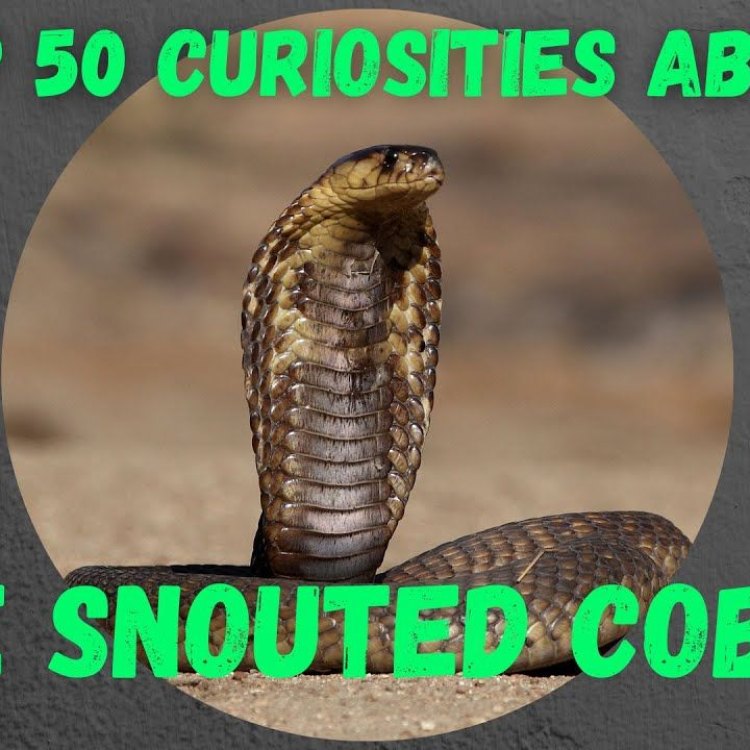
Snouted Cobra
- Adult Size: Large, but slender
- Average Lifespan: 10-15 years
- Reproduction: Oviparous (lays eggs)
- Reproductive Behavior: Males engage in combat for mating rights
- Sound or Call: Prolonged hissing sound when threatened
- Migration Pattern: Non-migratory
- Social Groups: Solitary
- Behavior: Nocturnal and secretive
- Threats: Habitat loss, persecution by humans, and collection for the pet trade
- Conservation Status: Least Concern
- Impact on Ecosystem: Helps control rodent populations
- Human Use: Feared and often killed by humans due to its venomous bite
- Distinctive Features: Long, narrow snout and hooded neck
- Interesting Facts: The venom of the Snouted Cobra mainly affects the nervous system, causing neurotoxic symptoms.
- Predator: Various snake predators including the mongoose and birds of prey
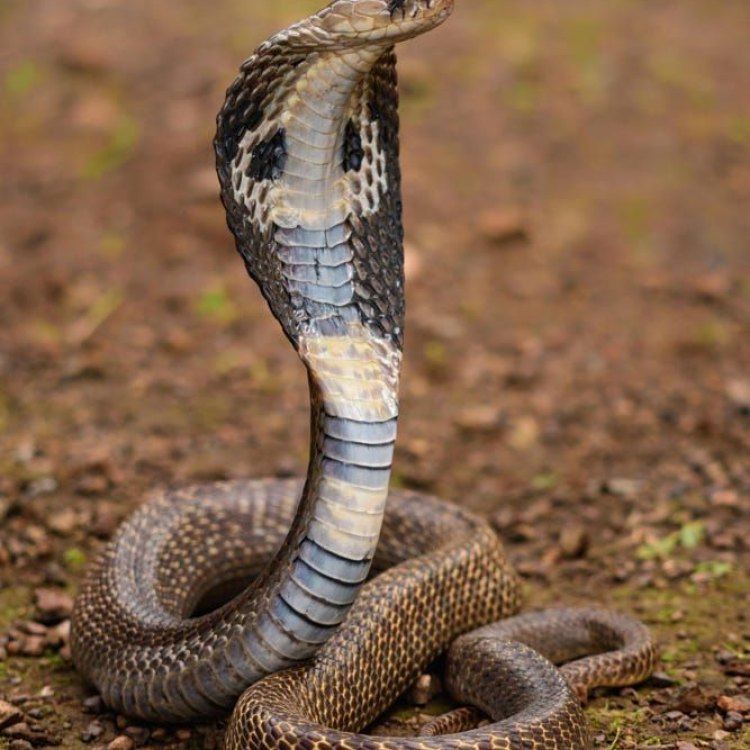
Naja annulifera
The Fascinating Snouted Cobra: A Unique and Deadly Snake
The world of snakes is full of intriguing and captivating creatures, but one that stands out for its distinctive features, behavior, and impact on ecosystems is the Snouted Cobra. Also known as the Egyptian cobra, this species is a member of the Elapidae family and can be found in various parts of Africa, ranging from Egypt and Sudan to Eritrea and Kenya. With its impressive size, unique appearance, and interesting behaviors, the Snouted Cobra has captured the attention and fear of humans for centuries. In this article, we will take a closer look at this deadly snake and all its fascinating traits PeaceOfAnimals.Com.Appearance and Size
The Snouted Cobra is a large but slender snake, with adults reaching an average length of 4-6 feet. However, some individuals can grow up to 8 feet in length. Despite its name, the Snouted Cobra's snout is not actually elongated, but rather boasts a sharp and prominent nose. Its most distinctive feature, however, is its hooded neck, which it can flare up when feeling threatened to appear larger and more intimidating. Its body is usually a light sandy brown color, with dark or black crossbands and a light belly.Behavior and Reproduction
The Snouted Cobra is an oviparous species, meaning it lays eggs rather than giving birth to live young. Females can lay up to 20 eggs at a time, which they then guard fiercely until the eggs hatch after 2-3 months. Males, on the other hand, engage in combat for mating rights, where they raise their bodies and push against each other to establish dominance. This behavior can be quite aggressive, and the snakes may even bite each other during these battles Swedish Vallhund.Another interesting behavior of the Snouted Cobra is its ability to make a prolonged hissing sound when threatened. This sound is produced by the rapid movement of air through the snake's enlarged tracheal chambers, and it can last for several seconds. This hissing noise serves as a warning to potential predators or humans to stay away.
Habitat and Migration
The Snouted Cobra is a non-migratory species, meaning it does not move to different locations throughout the year. Instead, it remains in one place for most of its life. These snakes can be found in a variety of habitats, including grasslands, woodlands, and savannas. They are also often found near water sources such as streams or rivers.Social Behavior and Threats
As a solitary species, the Snouted Cobra prefers to live alone and does not form social groups or communities. It is nocturnal and secretive, meaning it is active at night and spends most of its time hiding in burrows or under rocks during the day. This behavior helps the snake to avoid detection by potential predators or humans.However, the biggest threat to the Snouted Cobra is humans. This species is often perceived as a danger and is frequently killed by people due to its venomous bite. Additionally, habitat loss and collection for the pet trade also pose a significant threat to its survival. These snakes are highly sought after in the exotic pet market, and many are taken from the wild, leading to a decline in their population.
Conservation Status and Impact on Ecosystem
Despite the threats that the Snouted Cobra faces, it is currently listed as least concern on the International Union for Conservation of Nature (IUCN) Red List. This is because it has a wide distribution and is not currently considered to be facing a significant population decline. However, continued habitat destruction and human persecution could change this status in the future.One of the significant roles the Snouted Cobra plays in its ecosystem is controlling rodent populations. These snakes are apex predators and feed mainly on rodents, helping to keep their numbers in check. This is essential for maintaining a balance in the ecosystem and preventing an overabundance of rodents, which can have detrimental effects on the environment.
Venom and Human Use
The venom of the Snouted Cobra is primarily neurotoxic, meaning it affects the nervous system of its prey or the person it bites. It contains powerful toxins that can cause muscle paralysis, respiratory failure, and even death if left untreated. However, it is interesting to note that the venom of the Snouted Cobra is not as lethal as some other species, and fatalities from its bites are relatively rare.Despite its venomous bite, the Snouted Cobra is feared and often killed by humans. This fear, coupled with the snake's quite aggressive temperament when threatened, has led to its negative portrayal in popular culture and media. However, it is essential to recognize that these animals are merely trying to defend themselves and their territory and do not purposely harm humans. In fact, they play a crucial role in keeping ecosystems balanced and healthy.
Predators and Interesting Facts
Even though humans are the main threat to the Snouted Cobra, it is also preyed upon by various animals, including other snakes such as the black mamba and the Cape cobra, as well as mongoose and birds of prey such as eagles and hawks. The hooded neck of the Snouted Cobra serves as a defense mechanism against these predators and is often enough to intimidate them and make them back off.A fascinating fact about the venom of the Snouted Cobra is that it mainly affects the nervous system with neurotoxic symptoms. This is different from the venom of other cobra species, which can also have hemotoxic effects, affecting the blood and tissues of the victim. The lack of hemotoxic components in the Snouted Cobra's venom makes it less lethal to humans but still dangerous if left untreated.
In Conclusion
In conclusion, the Snouted Cobra is a truly unique and impressive creature. With its long, narrow snout, hooded neck, and interesting behaviors, this snake has captivated the interest and fear of humans for centuries. Despite the threats it faces, the Snouted Cobra continues to survive and play a crucial role in its ecosystem. It is an essential reminder that all animals have a place and purpose, and we must respect and protect them for the benefit of our planet. So next time you come across a Snouted Cobra, remember to appreciate its beauty and leave it be, as it plays a vital role in our intricate and delicate ecosystem.

Snouted Cobra: The Elusive Serpent of Southern Africa
Disclaimer: The content provided is for informational purposes only. We cannot guarantee the accuracy of the information on this page 100%. All information provided here may change without prior notice.

